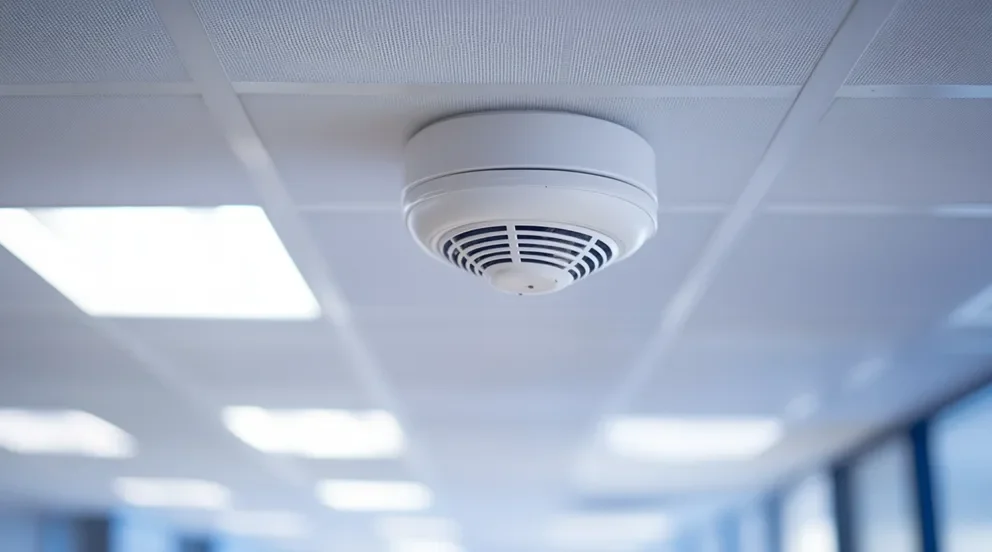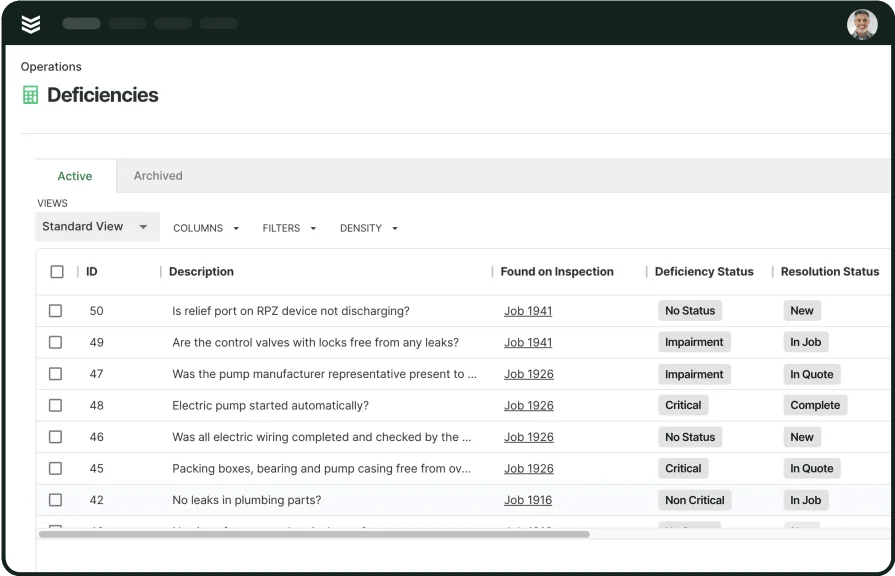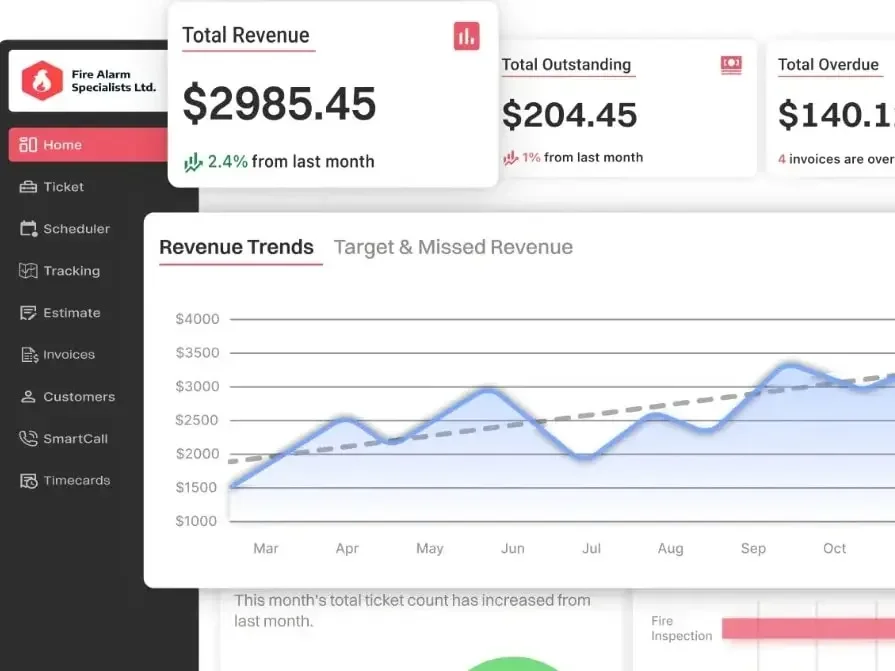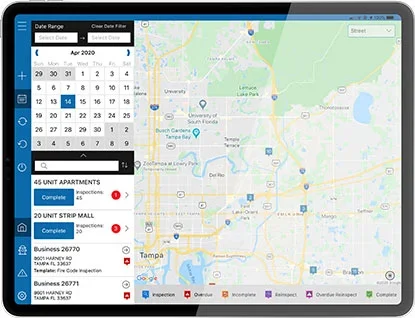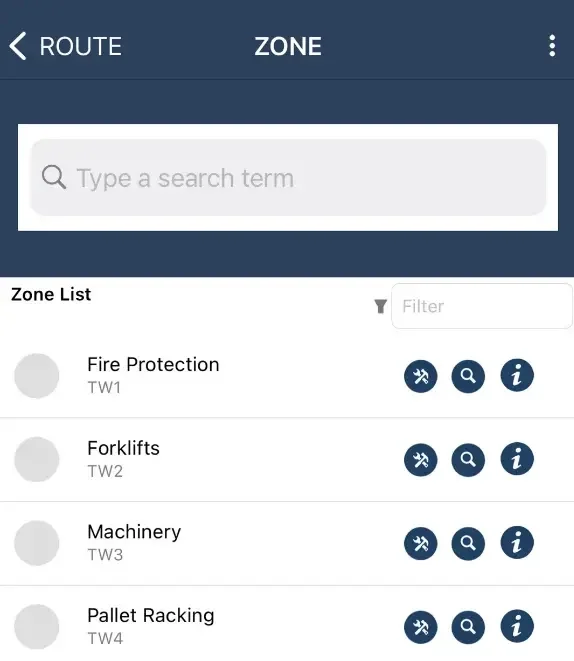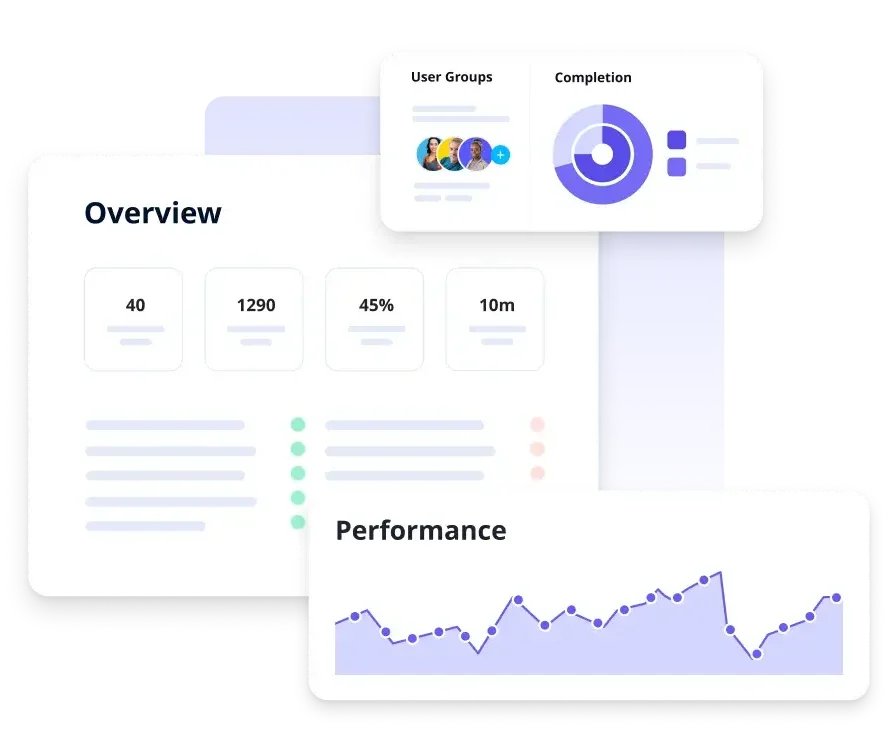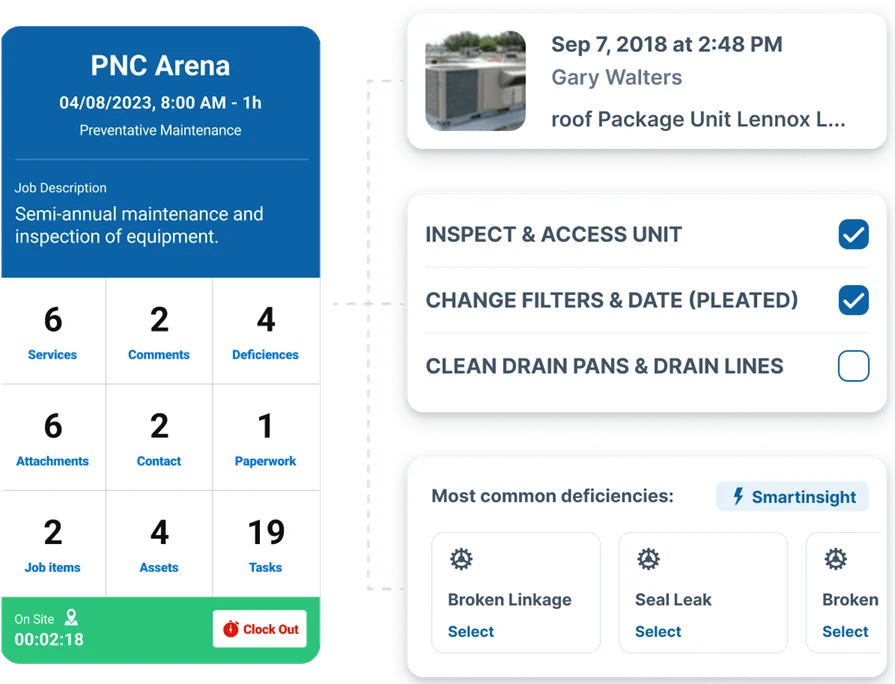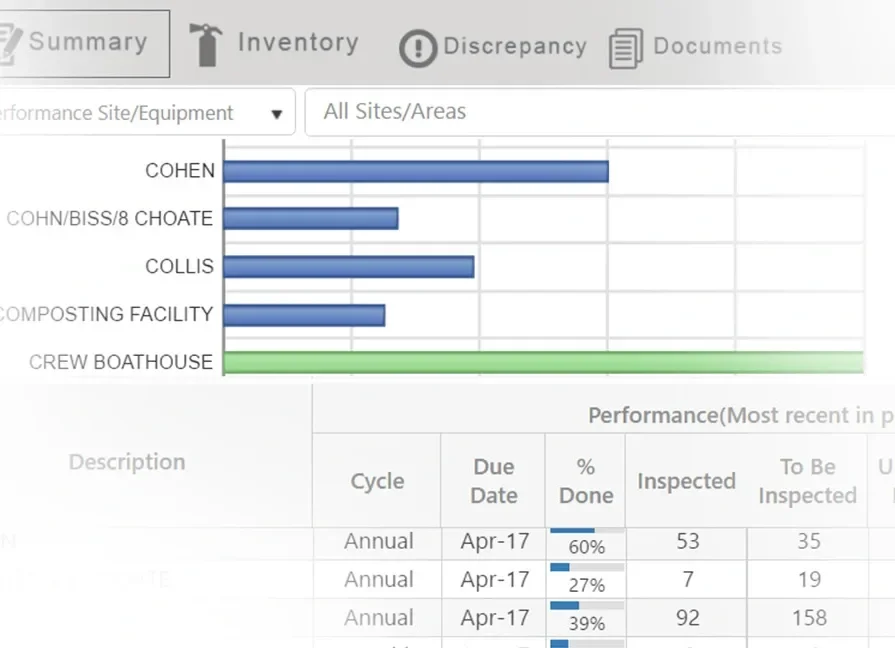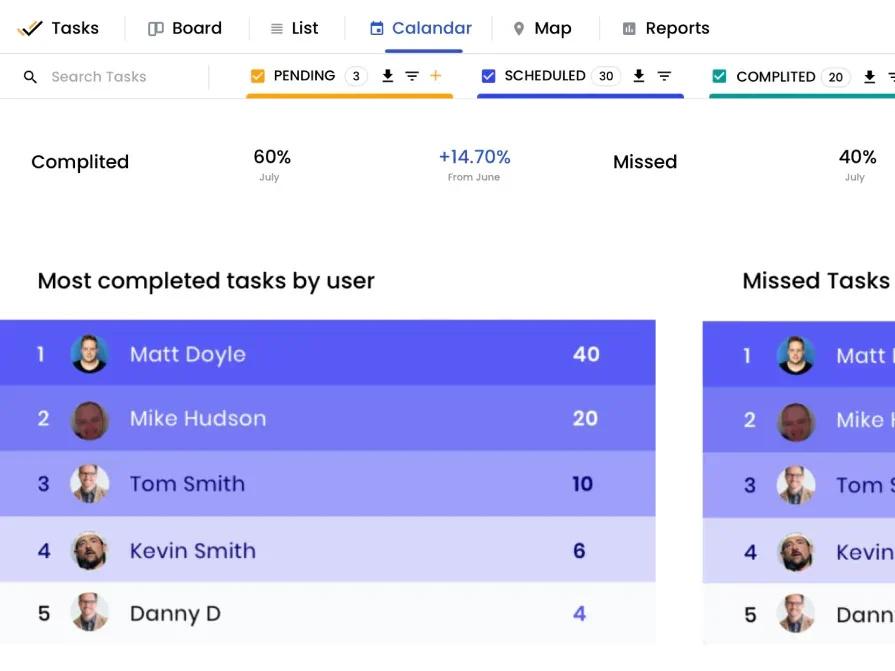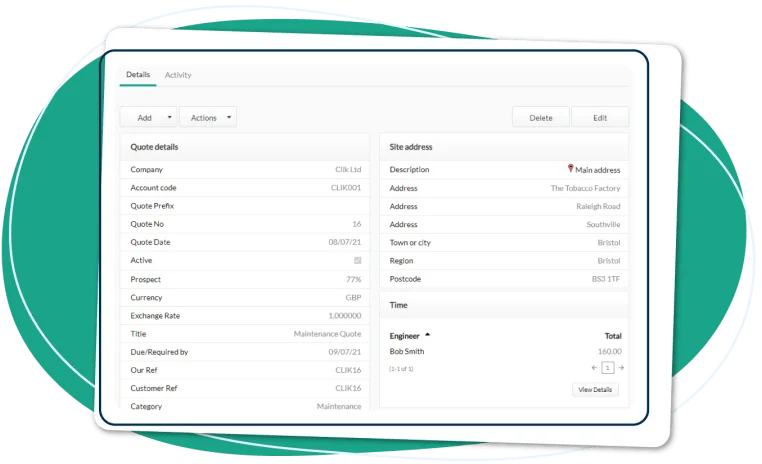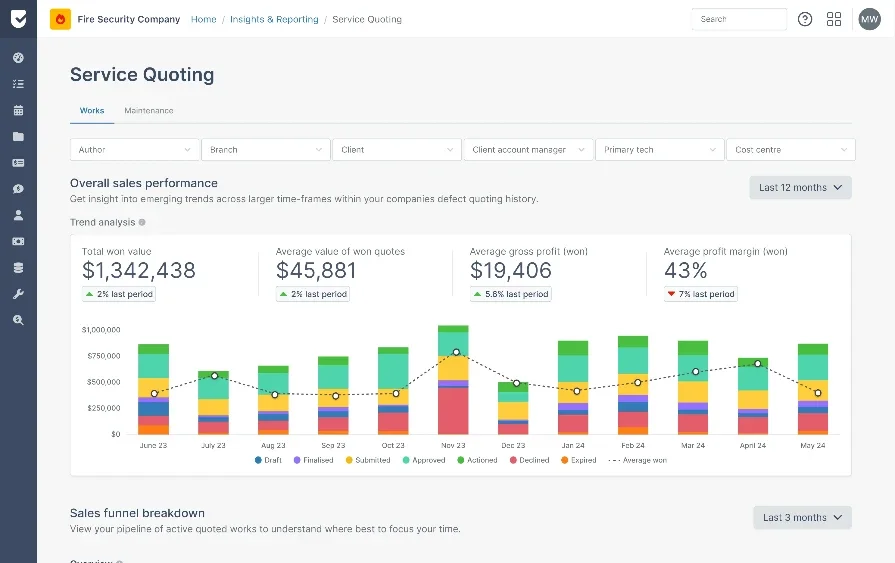Fire alarms, among other fire safety equipment, are vital in preventing injury and property damage if a blaze breaks out inside a building – but only if they work properly. That’s why you have to inspect them regularly to guarantee that they’ll be ready when they’re needed. The problem is that buildings have multiple fire alarms in various places throughout, and you have to service multiple properties over the course of a year. How do you keep track of it all?
Forget trying to do it all with pen and paper – it’s inefficient, prone to mistakes, and risks losing a critical report when you really need it. Using dedicated fire safety software is the way to go. The question is: which one fits your company best?
This article reinforces why you need software to manage fire alarm inspection and tells you what you should consider when choosing a provider. We cover:
- How to choose the right fire alarm inspection software for your needs
- 6 key features to look for in a fire alarm inspection management software
- 11 best fire alarm inspection report software for different types of teams
- 6 benefits of using fire alarm inspection software over manual reporting
- 5 important fire alarm test and inspection software FAQs answered
To start, we discuss things you should keep in mind regarding your own fire safety business when thinking about which fire alarm inspection program vendor you should buy from.
How to choose the right fire alarm inspection software for your needs
Every fire safety business is a bit different – and so has different needs – depending on where it’s operating, how big it is, how busy it is, and several other factors. When choosing fire alarm inspection management software, it helps to ask the following questions:
- Compliance – What fire safety codes and regulations does your business have to follow (based on where it’s located)?
- Compatibility – What other tools and programs do you already use (for accounting, CRM, compliance, etc.), and does the software integrate easily with them?
- Workload – How many fire alarm service calls do you handle in a day? How tight is your schedule?
- Ease of use – How well can your employees handle complicated fire alarm inspection software? How much time can you dedicate to training and setup?
- Customer service – How much support does the fire alarm inspection software vendor offer for setup and troubleshooting? How much do you need or can you afford?
- Price – What fire alarm inspection software can your business afford for how big it is? Can you distinguish between “need to have” and “want to have” features to fit something within your budget?
Once you have a picture of what your fire safety business needs, it’s time to start looking at what your alarm inspection software can do to meet those requirements.
6 key features to look for in a fire alarm inspection management software
Each fire safety business will have different wants and needs from alarm inspection software. However, there are some features that will tend to help any fire safety company, regardless of its setup. When shopping for fire alarm inspection report software, be sure to ask about these functions:
1. Automated smart scheduling and dispatching
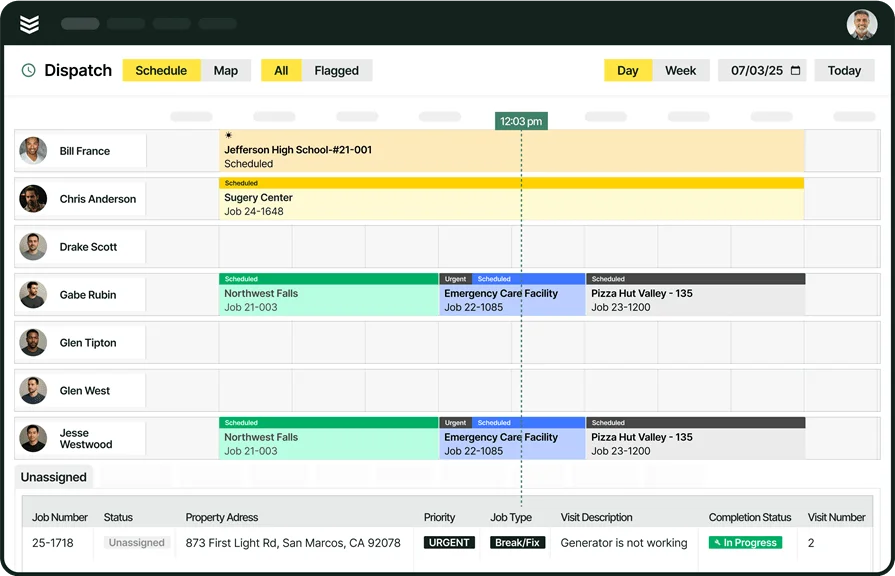
Trying to fit everyone’s routine inspections around each other while accounting for last-minute calls and cancellations can make managing your fire safety techs’ schedules a challenge. For example, how do you balance your techs’ workloads based on their skillsets? What’s the best route for each of your techs to take to fulfill all their service calls for that day? If an emergency comes up, who is the nearest tech qualified to do the job who can fill in?
The right software can make dispatching and scheduling for contractors much simpler. It can pick times to schedule service calls for where techs who can do the job are available. It can also assign techs to jobs automatically based on what they’re qualified for and when they’re not very busy. Techs can get instant alerts on a mobile app so they know where they need to go next and what the most efficient way to get there is.
2. Unified workflows based on flagged deficiencies
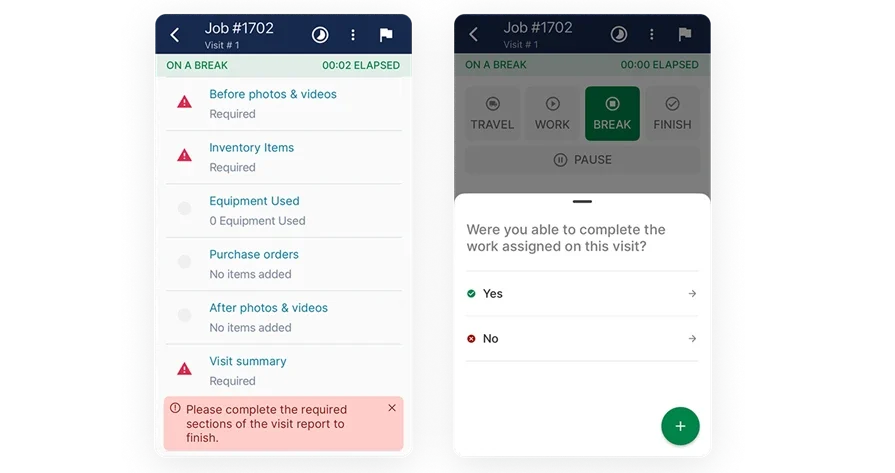
If you find a problem with a fire alarm, you need to note it and give recommendations on how to fix it (which could include replacing it with an upgraded model). Unfortunately, there’s often a disconnect in the handoff between inspection and service. That means your inspection team has to manually follow up with your scheduling, quoting, and billing people – you’re recording the same information in four separate systems. This is inefficient and risks something being missed through human error.
With the right software, though, each of these systems talks to each other to form a connected workflow for fire contractors. So when your inspection team identifies a problem and suggests repairs, that information goes straight to your quoting team so they can form an estimate. Similarly, it goes straight to your scheduling team so they can book an appointment and dispatch the right people, and to your billing team so they can draw up the invoice. No wasted time or risk of missing information from manually handing off job details from one department to another.
Deep Dive
Discover how BuildOps and Inspect Point work together to streamline fire life safety inspections. Learn how this integration connects inspection reports, service workflows, and compliance tracking—all in one powerful platform.
4. Automatically-updating compliance functions
Compliance requirements in regulated industries change pretty frequently, and the fire safety industry is no exception. But it can be frustrating to have to update your systems and report templates every time fire codes change or new rules are introduced.
If you have good inspection software, though, you can set it to make these updates automatically. You don't need to spend extra time adjusting all the components of your system to match the latest standards. Everything’s already set for you once the software updates.
5. Unified recordkeeping system
Effective fire alarm inspection software will store your reports and other inspection-related information in a central hub connected to all of your company’s departments. One of the ways this is beneficial is that it makes it easy for other departments to access report data if they need it. Otherwise, reports are siloed within your inspection team and require permission every time another department wants to get at them.
Another advantage is that it simplifies compliance work, as auditors will want to know more than just if your reports were written correctly. They’ll also want to know if action was taken on those reports, what that action was, and whether that action was done according to regulations. If information is pooled from each of your departments into a single software program, you can easily find and show auditors what they want to see. You don’t have to scramble between departments trying to find paperwork, access permissions, or information scattered across separate systems.
6. Mobile app
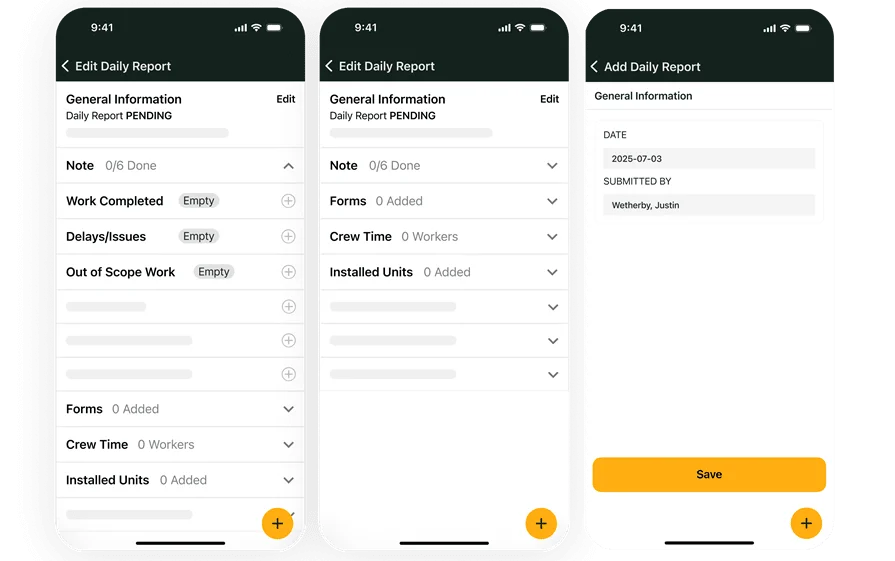
Your techs shouldn’t need to come into HQ every time they need to get information on a customer or file a report. That’s why it’s key to find fire alarm inspection software that includes a field service mobile app. It gives your techs access to all relevant job information while they’re out in the field, including customer details, optimized routes between work sites, and job specifics. It can also automatically track your techs’ locations and time spent on work; this lets you hold them accountable while making it easier to find and help them in an emergency.
Furthermore, it allows your techs to write field service reports right at the work site: completed work, factors that changed the potential cost, notes on what to do for future work, and more. They don’t have to try and remember job details until they get back to HQ, or even just ballpark data entry based on notes. They can write the report right after the work is done, and it gets sent to your back office immediately. Details don’t get missed, and your other departments can act on the information in the reports sooner to keep your workflow moving.
11 best fire alarm inspection report software for different types of teams
Every fire safety business is in a slightly different situation, so certain fire alarm test and inspection software options will fit some teams better than others. Here are our recommendations on fire inspection software for various scenarios.
1. Best fire alarm inspection software for commercial contractors: BuildOps
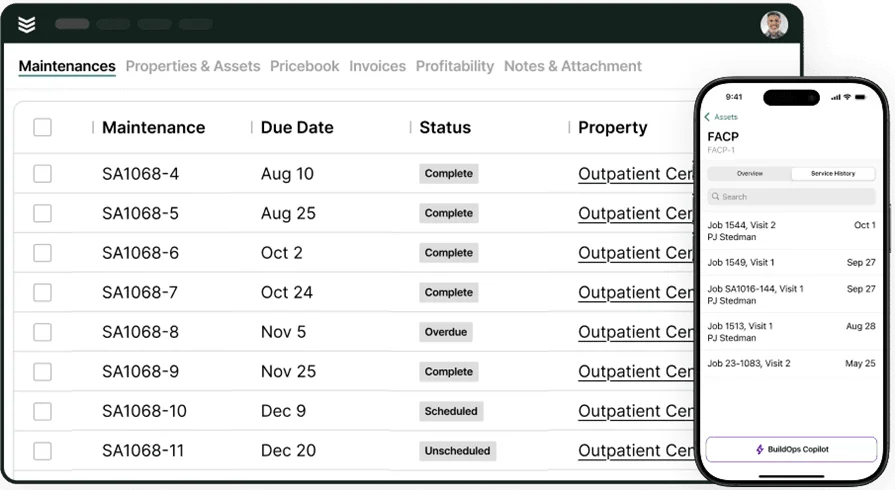
BuildOps is field service management software designed to handle complicated commercial projects. For fire alarm inspections, that means keeping inspection histories, service records, and asset data all in one accessible central location. This makes preparing for compliance audits easier, and it also allows for automating maintenance schedules and tech assignments to jobs. Techs receive dispatch notices instantly on a mobile app so they can arrive at the job site faster, which is especially helpful in emergency situations.
BuildOps also allows for flagging system deficiencies and then notifying customers of needed actions. It can even translate flagged deficiencies into quotes for service work, scheduled appointments, and invoices when work is completed – all in the same workflow. No need to manually enter information in separate systems and risk things not lining up or something going missing.
How Pricing Works: Based on the number of users per month.
What Sets It Apart for Commercial Contractors: BuildOps has many unique features that make keeping difficult commercial projects organized simpler. These include advanced search functionality, per-client asset tracking, a dispatch board that updates in real time, a drag-and-drop scheduler that filters techs by their qualifications, and a mobile app that uses AI to write notes quicker and instantly convert field reports to quotes or invoices.
Smooth out alarm inspection workflows, stay compliant, identify issues before they become problems, and recommend proactive equipment upgrades with BuildOps for commercial fire safety teams.
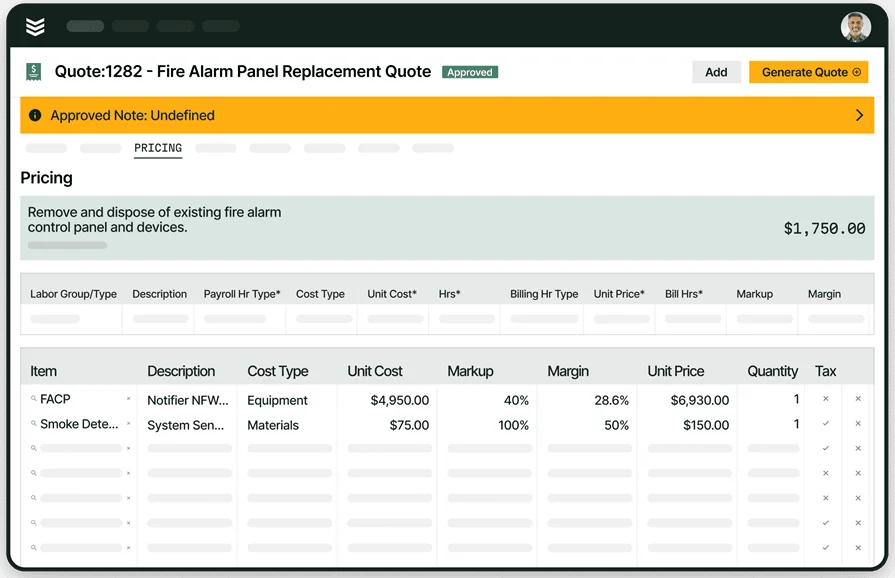
See BuildOps in Action
Get a quick walkthrough of inspections, reports, and dispatch.
2. Best for compliance: Inspect Point
Inspect Point is an easy-to-use yet highly-customizable fire alarm inspection program. Its main feature is that it includes templates for forms, checklists, reports, and even entire workflows that are compliant with the latest fire safety codes. It can also automate recurring scheduling for customers on service agreements or needing routine maintenance. Its powerful mobile app can collect signatures, generate reports, create proposals, exchange messages, and more – and this all updates in your back office in real time.
How Pricing Works: Tiered subscription plans (Silver, Gold, and Platinum); contact the company for more details.
What Sets It Apart for Compliance: It has strong data centralization and management functions that make audits easier, and it integrates with The Compliance Engine (a leading safety code tracking and enforcement app).
Stay compliant with fire codes when inspecting alarms via Inspect Point’s fire alarm and security software solutions.
3. Best for a comprehensive fire safety solution: ZenFire
ZenFire is a popular fire safety software program that combines inspection and reporting functions with other field service management features: estimates, scheduling, dispatching, invoicing, CRM, analytics, and a mobile app. It features customizable templates for checklists, forms, and reports, and can auto-generate reports from notes your techs make in the field. It also has always-available customer service if you need help.
However, because ZenFire takes care of so many field service management functions on the same platform, its interface is complicated and can take up to a week to learn. It also focuses on inspection and reporting, so its other functions are limited in what they can do. Its pricing isn’t upfront, either.
How Pricing Works: Monthly, quarterly, or annual billing based on the number of users.
What Sets It Apart for a Comprehensive Fire Safety Solution: Contains many field service management processes in one software program so you don’t have to worry about switching between apps or installing many integrations.
If you’re looking for a fire alarm inspection tool that bakes in a bit of field service management, check out ZenFire.
4. Best for deficiency tracking: Streamline Automation Systems
Streamline Automation Systems’ customizable reports and templates are designed for many different types of fire safety equipment, including alarms and hydrants. One of its standout features is that it allows for tagging compliance violations or other failures on equipment when writing reports. Inspection teams can then track which of these deficiencies do or don’t get fixed by service work when they do follow-up inspections.
Streamline Automation Systems’ also features scheduling, dispatching, route optimization, and CRM features. However, it only works on iOS or Windows systems; it doesn’t work on Android devices.
How Pricing Works: Contact the company for details.
What Sets It Apart for Deficiency Tracking: Allows for flagging deficiencies in inspection reports and tracking if they’ve been closed or remain open in subsequent inspections, giving a more detailed service history.
Stay on top of the “outstanding” or “addressed” status of fire alarm issues with Streamline Automation Systems.
5. Best for mobile devices: InspectNTrack
InspectNTrack is a mobile-focused fire alarm inspection service that has customizable inspection form, checklist, and report templates designed to comply with NFPA 72 fire codes. Its barcode-based system can automate updates on information like where a piece of equipment is, what condition it’s in, and whether it needs a follow-up inspection. It can also automatically schedule recurring inspections. Furthermore, InspectNTrack has a few other field service management features like route optimization and inventory management.
How Pricing Works: Tiered subscription service starting at $125/user/month.
What Sets It Apart for Mobile Devices: Its mobile app is available for both Android and iOS systems, and uses barcode scanning to automate various processes.
InspectNTrack’s fire alarm inspection software is built for fire safety teams that are constantly on the go. If you’re one of those teams, give it a look.
6. Best for reporting & analytics: SafetyCulture
SafetyCulture aids fire alarm inspections with a wide range of customizable form, checklist, and report templates. But its main strengths are its detailed reporting and analytics functions focused on safety and compliance. It also integrates with many other common business software programs. It has an easy-to-use mobile app and has a few other field service management features, like inspection scheduling and inventory management.
Where SafetyCulture falls short is in its lack of features specific to fire safety. It also has a general lack of other field service management capabilities – its focus is on reports and other (digital) paperwork.
How Pricing Works: Free version available; Premium version is $25-$30/user/month; Enterprise version allows for per-user or per-site billing, but requires contacting them directly.
What Sets It Apart for Reporting & Analytics: It already has very comprehensive reporting & analytics functions, but the ability to integrate with several different business software programs can take this even further.
Consider SafetyCulture’s fire safety software if you need your inspection reports and analysis to be as detailed as possible.
7. Best for general contractors: ServiceTrade
ServiceTrade is a field service management program that caters to fire safety companies (among other types of trades businesses). The base software contains many typical FSM functions: automated scheduling & dispatch, reporting & analytics, CRM, a mobile app, and integrations with common accounting software. The add-on Inspections module mixes in help with inspection paperwork, compliance, and data entry – especially via the mobile app.
Clients like ServiceTrade’s ease of use, efficient automations, and ability to track management of deficiencies found during inspections. Unfortunately, ServiceTrade and the Inspections module don’t come as an all-in-one package, so you have to switch between the two depending on what functions you need. In addition, the mobile app is said to perform inconsistently. Finally, you may have to renew your subscription to ServiceTrade manually; while this prevents unwanted automatic renewals, it can also mean losing access to your data until you renew.
How Pricing Works: Tiered subscription service (Select, Premium, Enterprise); contact them for more pricing details.
What Sets It Apart for General Contractors: ServiceTrade is designed to manage other types of field service operations besides fire safety, including mechanical service, HVAC, electrical, refrigeration, and kitchen exhaust cleaning.
ServiceTrade’s fire protection software is an option if you need a software solution that works with other trades besides fire safety.
8. Best for dedicated fire safety businesses: Onsite Software
Onsite Software’s Life Safety Inspector (LSI) program has many helpful features for fire alarm inspections. It’s able to plan inspection routes based on alarm locations and walkable areas within a building. It also allows attaching photos and voice notes to inspections for additional details. It even keeps a full performance history for each alarm so you can give proof of service and plan proactive maintenance.
Its mobile app works with both iOS and Android devices. You can create reports straight from the app, and even use it in offline mode and just sync the data later. It also has multiple customizable form templates; you can add more, but some of them cost money to purchase.
How Pricing Works: Contact them for a demo and pricing; they allegedly offer monthly or annual plans.
What Sets It Apart for Dedicated Fire Safety Businesses: In addition to its many helpful features for fire alarm inspection, LSI works for inspections of many other types of fire safety equipment: extinguishers, sprinklers, pumps, dampers, fire doors, and more.
Onsite Software’s Life Safety Inspector software may be what you’re looking for if your business inspects many more pieces of fire safety equipment than just alarms.
9. Best for NFPA-specific inspections: Array
Array is software for creating and managing forms, which can be useful for fire alarm inspections. It contains many templates designed to comply with NFPA fire codes, and allows for adding annotated photos and videos to forms for further evidence. Once you’ve completed an inspection form, you can instantly turn it into a branded PDF report. Array can even automatically schedule follow-up actions if a piece of fire equipment fails inspection or has some other issue.
Array also has a mobile app that works for both Android and iOS devices, and that can work in offline mode if you need to fill out a form and process it later. However, Array lacks other common field service management features.
How Pricing Works: Free version available; tiered subscription service starting at $30/user/month.
What Sets It Apart for NFPA-Specific Inspections: It has the ability to turn completed inspection forms into NFPA-compliant reports that include information on the location, time, and inspector’s credentials.
If NFPA codes are the main fire safety codes you have to comply with, Array’s fire inspection & reporting software has you covered.
10. Best for flexibility: Clik
Clik offers both field service management and inspection management for fire safety businesses. One of Clik’s biggest strengths is the ability to modify templates with custom data fields. It also allows for electronically signing forms, and lets you set reminders for upcoming inspections and service renewals. You can even create custom templates for specific recurring jobs.
Clik has other field service management functions such as appointment scheduling, asset management, CRM, and invoicing. However, they’re in a separate product – you need to buy Clik Service for FSM and Clik Cert for form management. Clik also has separate packages for its cloud-based software (Clik Remote) and mobile app (Clik Jobs). This gives you more options in terms of only paying for what you need, but it can be a hassle instead if you already wanted those features to begin with, as some other software providers include them as part of the default bundle.
How Pricing Works: Contact them for a demo and pricing; their main products have tiered onboarding packages.
What Sets It Apart for Flexibility: Clik is sort of a “build your own software package” where you can pick which functions you do or don’t need (though you’ll probably want most of them anyway). It also offers several customization options for inspection templates, right down to specifically-formatted data fields.
Clik’s fire safety software is worth looking into if having lots of customization options for your fire alarm inspection software is important to you.
11. Best for ease of use: Uptick
Uptick is alarm inspection software built specifically for the fire safety industry, coming pre-loaded with templates that conform to many common fire safety codes (including NFPA and AES). It features visual control dashboards for device performance tracking and other insights, and smart scheduling technology that inherently factors in route optimization between work sites. Its inspection reports are thorough, and it has a customer portal that lets clients view report results and service updates.
Uptick also has an easy-to-use mobile app for both Android and iOS devices. The main issue with Uptick, though, is that it has limited tools for businesses that specialize in installing or replacing fire safety equipment (as opposed to inspecting and maintaining it).
How Pricing Works: Contact them for a quote; appears to be based on the number of users per month.
What Sets It Apart for Ease of Use: One of its stronger features is the ability to quickly convert deficiency flaggings into quotes for service work.
If you’re looking for dedicated fire alarm inspection software that takes care of a lot of the heavy lifting for you, see if Uptick might be what you need.
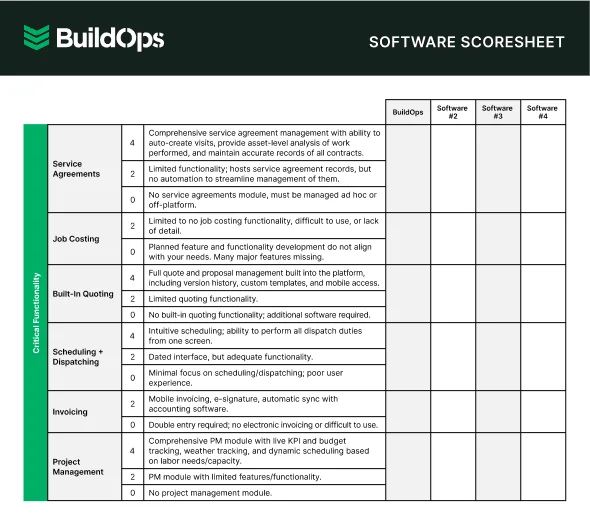
Compare the Best Software in One View
See how leading inspection tools stack up in one quick scoresheet.
6 benefits of using fire alarm inspection software over manual reporting
Let’s back up for a minute and answer a question that may be on your mind: “Why do I need software to do fire alarm inspections at all? Can’t I just do things the old-fashioned way with paper and pen?” You could, but you’d also realize very quickly that it’s too slow and cumbersome for the speed at which business runs these days. Fire alarm testing software helps you avoid problems with manual reporting such as human error, lost paperwork, and time wasted entering the same data in several different places.
Here are six other reasons using software for fire alarm inspections is the better option:
1. Consistent data
A big problem with manual fire alarm inspection reporting is that you have to write your report at the site, then re-write it in other places for documentation purposes. This is time-consuming, prone to human error, and can cause issues with data integrity. If someone makes a customer data entry mistake, or enters data correctly but the customer’s details have changed, how do you know which information set is the accurate one?
Even software can have this problem if you’re using separate programs that can't sync with each other. That’s why it’s better to use dedicated alarm inspection software that consolidates all data in one place, where everyone can access it and see the most up-to-date version of it.
2. Efficient scheduling
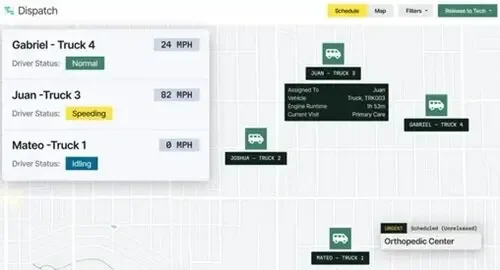
Fire alarm inspections typically need to be done at specific frequencies (weekly, monthly, annually, etc.). The problem is you have to schedule them around other maintenance work and anything else going on in the building. With manual reporting, paperwork can be lost and wires can get crossed regarding what work is happening and when.
Fire safety scheduling and dispatch software, on the other hand, can automatically find the best spots to slot in periodic inspections among other activities. It can also sync with digital calendars so both you and the building manager know when an inspection will take place. In addition, it can send out automated reminders so everyone can plan ahead to make the inspection go as smoothly as possible.
3. Optimized dispatching
Hand-in-hand with scheduling is dispatching: actually getting a tech to the job site to do the inspection. But it’s tough using manual methods to figure out who is available to take the service call – and if they’re even qualified to do so. The other challenge is figuring out the most efficient way to get the tech to the job site while still fulfilling their other service calls.
Forget the paper calendars, spreadsheets, and maps. Fire safety dispatch software lays out your techs’ schedules and specialties so you know who is where, when, and what they’re able to do. Then you can just drag and drop your techs into schedule slots where they fit the job, and they’ll get an instant alert of what they’ve been scheduled for. Plus, the software can automatically calculate the most efficient route to get your tech from their current location to the new job site, keeping customers happy with prompt service.
4. The latest updates, when you need them
Manual inspection reporting is static, and this causes two problems. One is that once you write a report, either on paper or in a computer document file (e.g. PDF), the information is frozen in time. Every time you want to change anything, including updates to fire codes, you have to manually re-write parts of the report or your other documentation. This is inefficient time-wise and vulnerable to someone making a mistake.
The other problem is in getting reports to whoever needs to see them. Paper reports need employees to come into the office and search through a file folder or filing cabinet for the report they need. Even with computer files, the person who needs to read the report will have to download the report and open the file. There can be a significant time gap between when the report is sent and when it’s received, so this is also inefficient.
With dedicated fire alarm inspection reporting and analytics software, however, employees can have real-time access to reports. Software can also automatically edit reports to comply with changes in fire codes and other information, making sure everyone is working with the most current data. This shortens response times and increases productivity, which is important in an industry where every second counts.
5. Tighter compliance
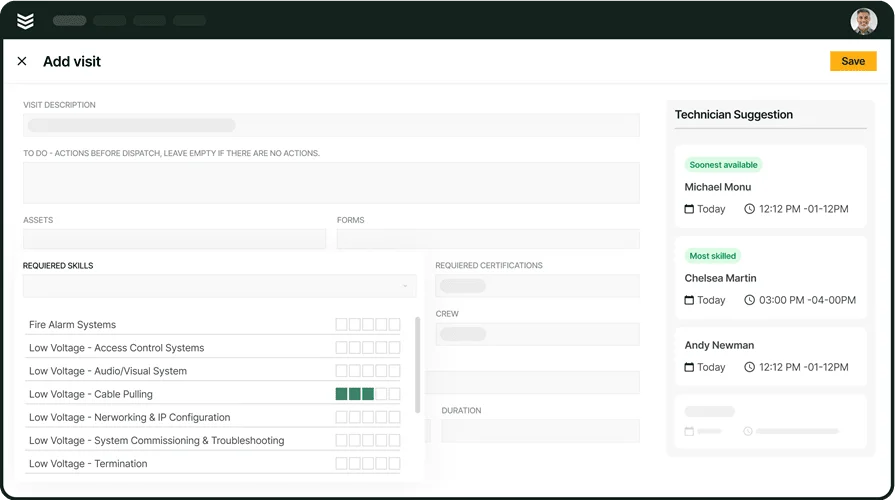
Regulations are strict in the fire safety industry, and penalties can be steep for not having the right documentation on file during an audit, improperly formatting a report, or missing a report submission deadline. Writing reports manually with pen & paper, or in loose computer files, increases the risk of any of these things happening.
Using dedicated alarm inspection software, however, lets you analyze reports before you submit them to make sure they meet regulatory requirements. It can also give you automated reminders for submission deadlines so you get your reports in on time. Furthermore, it keeps all records and documentation in a single place so they’re easy to find and access if you get audited.
One more thing we’ll mention is that software can keep track of changes in regulations (and can even alert you to them) so you won’t be caught unawares if there are new rules you have to follow or different formats you have to write reports in.
6. Proactive risk management
Another way you can use fire inspection software for analysis is in tracking the service history of a particular property. Patterns in equipment age, status, or issues can prompt recommendations of replacements, upgrades, or more immediate maintenance work. Keeping your customers ahead of the curve like this can reduce the risk of their alarm systems not working when needed. This not only protects your business from legal liabilities for injuries or property damage, but also helps prevent injuries and damage from happening in the first place.
5 important fire alarm test and inspection software FAQs answered
Here are some other useful things to know about software-based fire alarm inspection tools.
1. What does good fire alarm inspection software look like?
First and foremost, alarm inspection software should allow you to record and organize fire alarm inspection reports. But it should be able to do much more than that, including:
- Create estimates or quotes for service work based on report recommendations
- Schedule service calls if customers want or need follow-up fire safety work done
- Dispatch qualified techs to job sites using the most efficient routes
- Track techs’ locations and time spent working through a mobile app
- Invoice and accept payment from customers based on service work done
- Manage customer details and analyze them to suggest future purchases
In other words, it should be a hub that connects all parts of your fire safety field service work. Ideally, it should also be able to automate tedious but important tasks in each of the above processes, speeding them up while avoiding errors. Examples include:
- Drag-and-drop calendars for scheduling and dispatch
- AI-powered field service routing to help your techs get between job sites efficiently
- Cloud-based mobile apps that allow techs to send and receive information while in the field
Together, these automations can save you time, money, and hassle in running your fire safety service.
2. How do you transition away from manual reporting to fire alarm inspection software?
The transition away from manual fire alarm inspection reporting to a software-based system involves a number of steps. Here’s a rough outline of what your agenda should look like:
- Identify the specific features your company needs in inspection reporting software.
- Research different software vendors to see what they offer in their fire alarm inspection programs.
- Request hands-on demos or trials to test if software is user-friendly and has the features the vendor claims it does.
- Once you select an option, have the vendor customize it for your purposes if applicable.
- Import any relevant data into the software and double-check that it’s correct.
- Train your staff on how to use the basic software functions, asking the vendor for help or clarification when needed.
- Integrate any other programs you use with the software if it supports them.
- Roll out the software for official use by your employees.
3. Is BuildOps AHJ-compliant?
Absolutely. BuildOps is compliant with many well-known fire and life safety codes, including AHJ, National Fire Protection Association (NFPA), Underwriters Laboratories of Canada (ULC), The Joint Commission, Det Norske Veritas (DNV), and AES.
4. Can you customize BuildOps for NFPA codes?
You sure can! BuildOps has several report templates that you can customize to your business’s branding and needs while still being compliant with NFPA codes.
5. Is fire alarm inspection software worth the cost?
Yes – perhaps even more so than field service management software for other trades. Fire alarms are key components in initially warning of an uncontrolled fire. They prompt people to evacuate a building and get to safety faster, while also signaling firefighters to get to the scene sooner and limit property damage. When lives are on the line, you need to be absolutely certain these systems are going to work when they’re needed. So siloed information in paper reports, spreadsheets, and disconnected apps just isn’t going to cut it anymore.
When it comes to fire alarm compliance software, inspections to find deficiencies and field services to fix those deficiencies shouldn’t have to live in separate systems. You can’t afford delays between finding issues with fire alarms and scheduling & dispatching techs to fix those problems. You also can’t afford to forget a step in your workflow because you’re manually moving data from one system to another, or to have inconsistencies in your data because you have to enter it more than once.
BuildOps, with help from Inspect Point, has designed a system where inspections and related field service are all part of the same workflow. Launch inspections from BuildOps and sync them to the Inspect Point mobile app. Complete the inspections in-field with Inspect Point and automatically sync reports and deficiencies back to BuildOps. Then your back office is immediately ready to build quotes, schedule appointments, and dispatch techs. No waiting around, no lost data, no skipped steps.
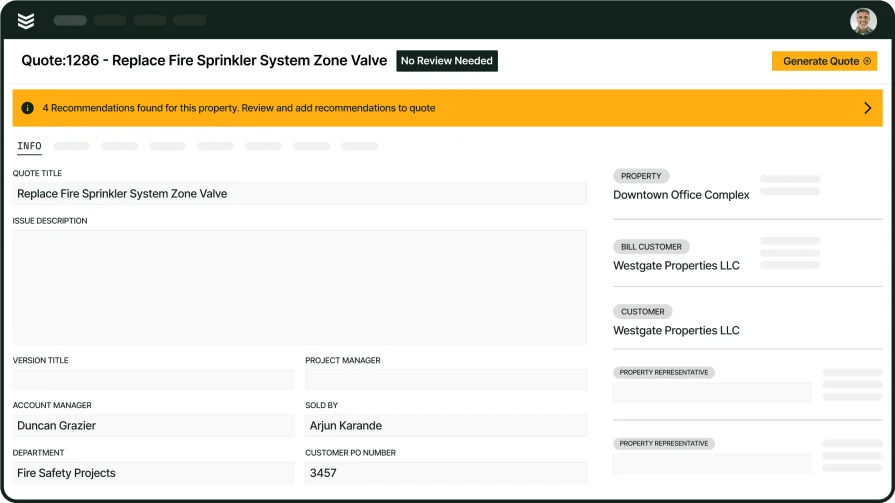
Unify Your Inspections and Field Operations
See how BuildOps keeps your entire workflow—from inspections to service—connected and seamless.
